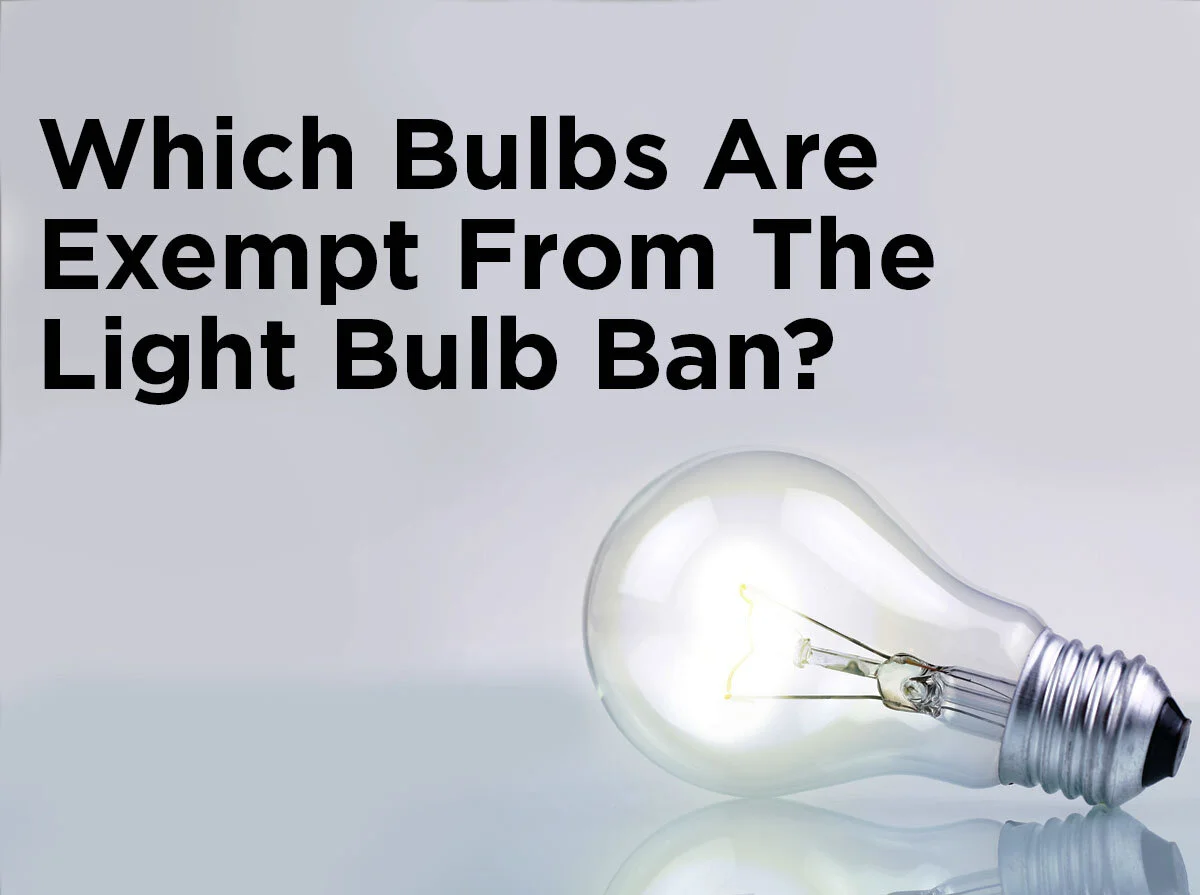Which Bulbs Are Exempt from the Light Bulb Ban?
Now that the collective freak-out over 100-, 75-, 60-, and 40-watt general service incandescent light bulbs being banned by the EISA has started to dissipate, it seems that many have been left wondering if the ban includes all incandescent bulbs. Thanks to some of your feedback, we've realized that many people aren't aware which types of incandescent bulbs are exceptions to the new rules.
First, according to Section 321 of the EISA, the only type of incandescent bulb that may no longer be manufactured is one that’s intended for general service applications, has a medium screw base (E26), emits between 310 and 2,600 lumens, and operates in the range of 110 and 130 volts. These general service bulbs can still be bought. However, as 1000Bulbs.com CEO Kim Pederson mentioned in an interview with NBC, they are selling fast. However, starting August 1, 2023, bulbs that do not meet the new standards will be banned completely and you will no longer be able to purchase them.
Below is a full list of incandescent bulbs with plenty of stock that will continue to be produced in 2014 and beyond.
Appliance bulbs – Any bulb that is designed for household appliances such as an oven, refrigerator, microwave, etc. is exempt. Appliance bulbs usually operate at 40 watts or less and are designated and labeled for a specific application. However, many brands have already begun replacing incandescent appliance lamps with LEDs in newer models.
Candelabra bulbs – Have no fear! The skinny, flame-shaped bulbs you use in your chandeliers and wall sconces are exempt as long as they consume 60 watts or less. Candelabra bulbs have smaller screw-in bases, usually classified as E12 or E11, and are also available in LED options.
Rough service bulbs – If you just can’t let go of the standard A-shape of the incandescent bulb, you’re in luck.Rough service bulbs look and work exactly the same as the banned general service bulbs; the only difference is that they include a few extra filament supports and are intended for use in heavy-duty applications in industrial environments. These exempt bulbs are available in a variety of wattages and are an almost identical replacement for traditional incandescents.
Bug lamps, black lights, and colored bulbs – Good news: You can still use incandescent black lights and colored bulbs to light those awesome Halloween parties you have every year. Yellow incandescent bug lamps use a special coating to block wavelengths that attract bugs so you won’t be swarmed by flying insects every time you have friends over for a nighttime backyard barbecue. Bug lamps typically have heavy-duty filaments that make them last longer in outdoor environments.
Reflector lamps – While there are exempt incandescent reflector lamps, they still have to abide by a few guidelines. The reflector lamps not affected by the light bulb ban are as follows:
BR30, BR40 and ER40 lamps rated at 65 watts (including 65BR30 and 65BR40)
ER30, BR30, BR40, and ER40 lamps rated at 50 watts or less
R20 lamps rated at 45 watts or less
More exempt light bulbs:
3-way bulbs
Antique Edison bulbs
Silver bowl light bulbs
Shatter-resistant lamps (includes shatter-proof and shatter-protected lamps)
Showcase lamps
Traffic signal lamps
Plant grow lights
Vibration service lamps that use a maximum of 60 watts
Marine lamps
Marine’s navigation lamps
Mine service lamps
G-shaped bulbs with a diameter of 5 inches or more
T-shaped bulbs that use no more than 40 watts and are longer than 10 inches
B, BA, CA, F, G16-1/2, G-25, G-30, M-14, or S lamps using 40 watts or less
Do you have any more questions about exempt incandescent lamps? Leave it in the comments, or contact us on Facebook, Twitter, or Pinterest!








